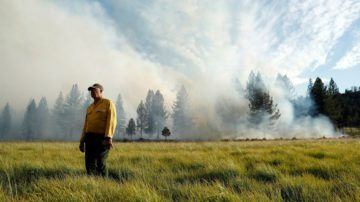 Kim Stanley Robinson in the FT:
Kim Stanley Robinson in the FT:
What does it feel like to live on the brink of a vast historical change? It feels like now.
Of course that sounds hyperbolic, and maybe even panicky, but I think we’re there. Not that a science fiction writer can see the future any better than anyone else; very often worse. But between the pandemic, the accelerating drumbeat of extreme weather events and the accumulations of data and analysis from the scientific community, it’s become an easy call.
A few weeks ago, my wife and I drove across the US east to west. In Wyoming, we hit a pall of wildfire smoke so thick that we couldn’t see the mountains just a few miles away on each side of the road. It went on like that for 1,000 miles.
Then we arrived in California just in time for the latest report from the UN Intergovernmental Panel on Climate Change, which documents in meticulous detail the true scale of the climate problem. Humanity now stands on the brink of not just change, but disaster. And because we can see it coming, just as clear as a black storm on the horizon, our attempts to dodge disaster and create a healthy relationship with our only home will bring huge changes in our habits, laws, institutions and technologies.
All this is visible to us now. Unlike the people living in the years before the first world war, we won’t be sandbagged by catastrophe. The 2020s will not be filled with surprises — except perhaps at the speed and intensity of the changes coming down. With its atmosphere of dread foreboding, our time more resembles the years preceding the second world war, when everyone lived with a sensation of helplessly sliding down a slippery slope and over a cliff.
More here.
